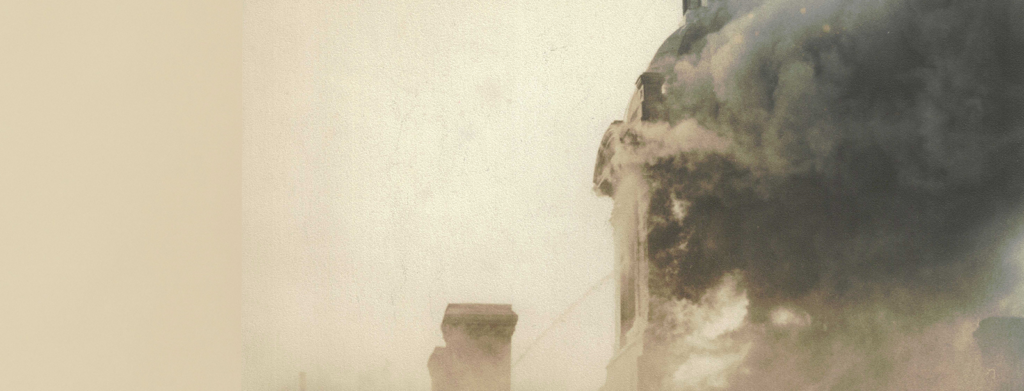
The excitement was like nothing the Vincentians of the Eastern Province living at the Germantown Seminary had ever experienced. John Sinon, a novice, was in the quadrangle behind the seminary on his way to ring the bells for dinner, when he discovered smoke pouring from the roof of the building. He quickly spread the alarm to his fellow Confreres. The fire had started at 6:20 p.m. in the fourth floor quarters of Fr. William Agnew, CM, while the Novices were assembling on the first floor for prayers.
Upon seeing what headway the fire had made, several Novices and a Brother hastened to remove whatever furniture and furnishings they could handle from the third floor rooms. This proved to be a wise move, since the water used to dowse the flames began pouring through the ceiling to these quarters.
Fifteen priests and fifty-three novices aided by six lay Bothers used water buckets and fire extinguishers to fight the blaze, which rapidly swept the fourth and fifth floors of the Seminary. Smoke eventually forced them to retreat, but seventy-five firefighters from local Engine Company 9 soon responded to the two-alarm emergency alert. Low water pressure hampered the efforts, which hindered them from checking the flames for an hour and a half. A chemical hose was eventually used until lines were attached to distant hydrants.
The fourth floor, which was formerly the students’ corridor, had recently been renovated and partitioned into double rooms for the Priests. It was this floor together with the “Mountains”—the fifth floor—which was ruined.
A stone wall, which separated the center of the building from the east wing, prevented the fire from spreading in that direction. The only danger to this section would have been if the cupola crashed onto the lower roof, but fortunately that did not happen.
When all possible preventative measures had been taken, the Confreres went out to the yard to assess the damage. For the first time that night, the magnitude of the fire was realized: two upper floors of the seventy-three-year-old building and a wooden cupola on the roof were badly damaged.
While, thankfully, there were no fatalities, eight respondents sustained injuries from falling debris and loose nails or were overcome by smoke inhalation.
Thousands came out to view the spectacle. By 8:30 p.m., most of the fire was contained and eventually extinguished, although patches were burning in numerous places along the roof. These were extinguished and all endangered sections secured by 9:00 p.m. The firefighters, however, remained on the scene the remainder of the night due to the possibility of igniting a new outbreak.
The following morning, the full extent of the damages could be examined more closely. Several ceilings of the rooms even as low as the first floor had caved in, due to their being weakened by the water that had seeped through the floor boards. The entire fourth floor, with the exception of the west wing, was completely ruined. The fifth floor was in a similar condition, and the tower above it sustained badly burned uprights.
Although there was considerable damage, the Priests were thankful that it did not occur late at night when there might have been loss of life or serious injuries. As it was, none of the Confreres suffered more than temporary inconveniences and the loss of the use of their rooms. “It was fortunate that the Novices were on hand and quickly reacted,” noted one Priest
What those present experienced that night was not what was damaged, but rather what was not. To their amazement, the cross surmounting the cupola, was not even singed by the flames. In addition, a statue of Our Lady, which stands in the stairway between the fourth and fifth floors where the fire did the most damage, was likewise untouched.
The seminarian reporting the incident in his diary wrote, “Surely such a remarkable occurrence should move us to have complete trust and confidence in the all-powerful protection of Our Blessed Lord and His Immaculate Mother Mary.”On May 15, 1940, flames engulfed the fourth floor of the Vincentians’ Seminary in Germantown. The destruction of the tower is evidenced in these photos. Thankfully, there were few injuries and no fatalities.

